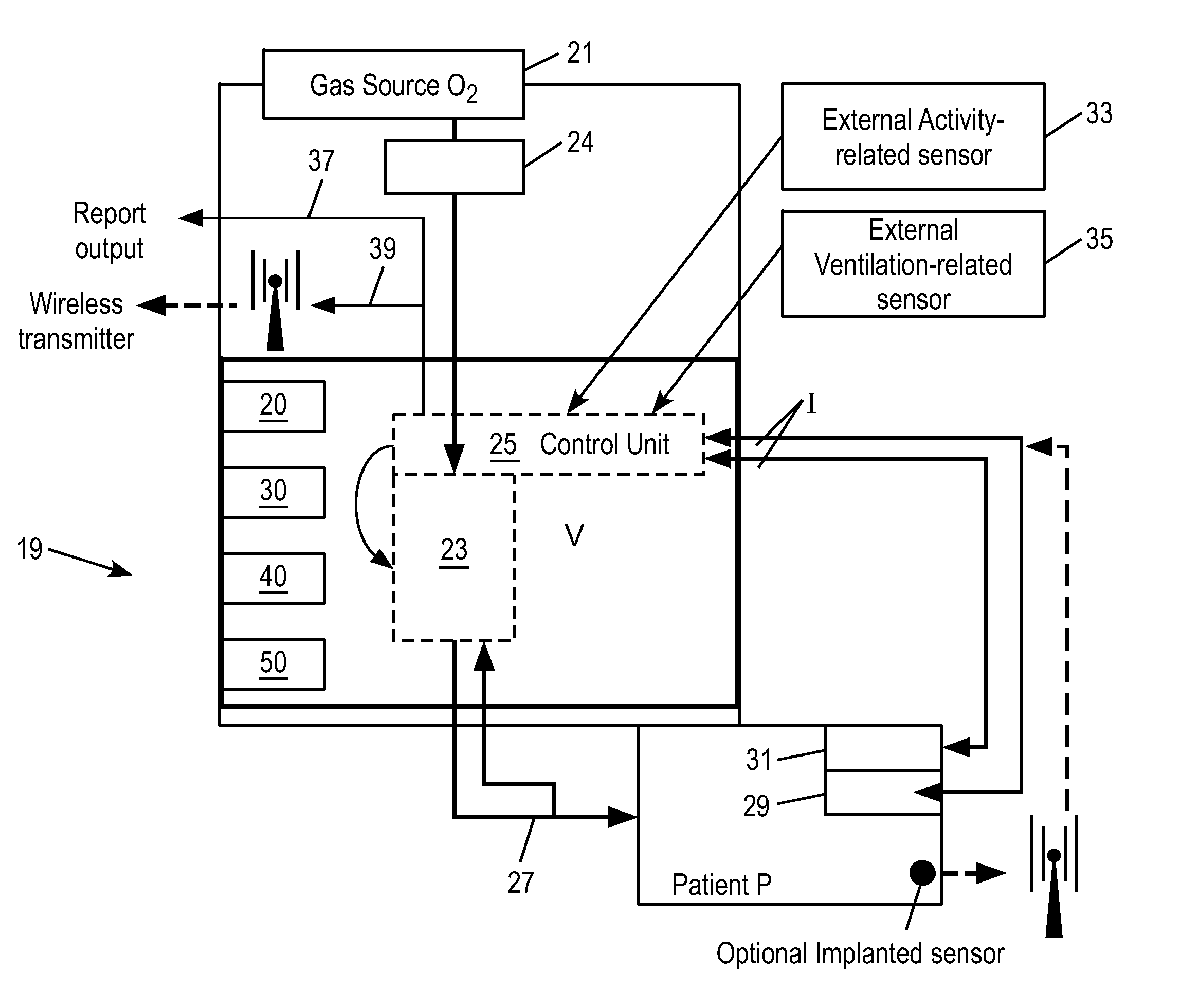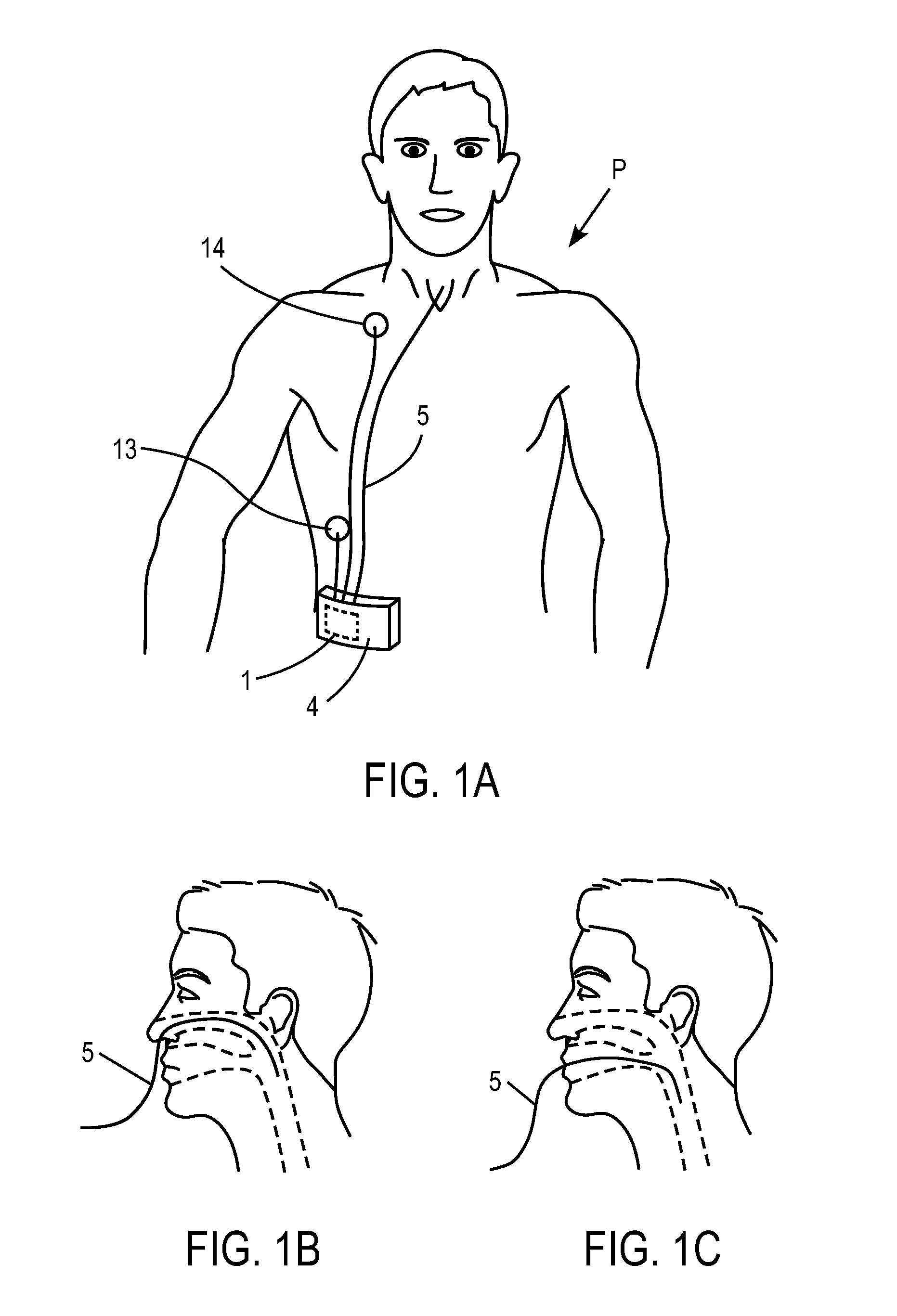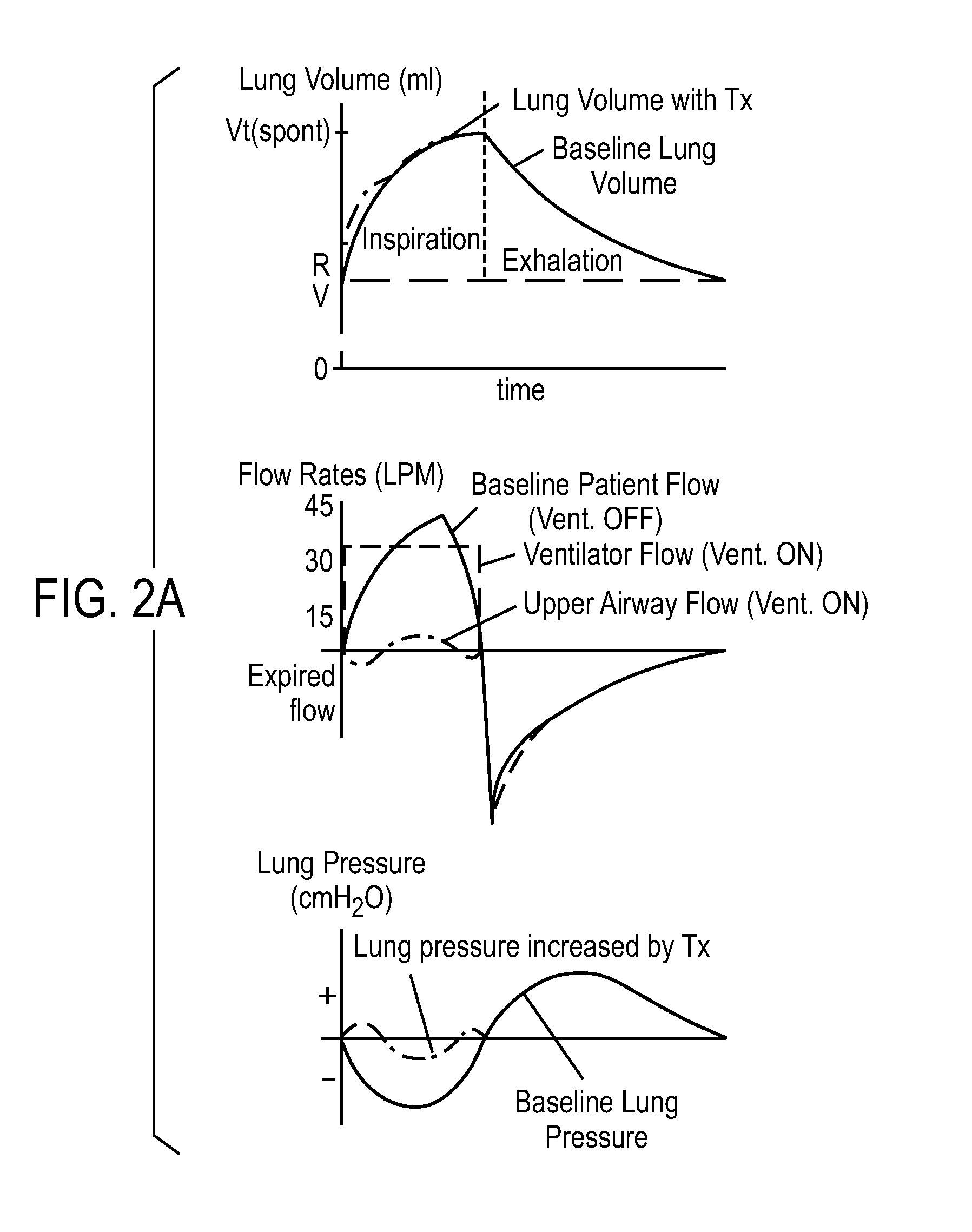Ventilator with biofeedback monitoring and control for improving patient activity and health
- Summary
- Abstract
- Description
- Claims
- Application Information
AI Technical Summary
Benefits of technology
Problems solved by technology
Method used
Image
Examples
Embodiment Construction
[0049]Embodiments of the present invention provide improved systems, methods, and apparatuses for supporting the respiration of a patient using patient input, providing patient feedback, or both. Embodiments of the present invention may provide respiratory support that promotes mobility and activities of daily living, and / or that is more compatible with mobility and activities of daily living as compared to conventional respiratory support systems, methods, and apparatuses. Respiratory support can be accomplished in a variety of ways, including, but not limited to, by providing controlled synchronized ventilation with a directed flow of an oxygen-bearing gas. The oxygen-bearing gas may be, for example, substantially pure oxygen, mixtures of oxygen and nitrogen, mixtures of oxygen and inert gases, ambient air, or various combinations thereof. In addition, the oxygen-bearing gas may include enhancements, such as fragrances, aerosolized drugs, humidification, or heating. Patient input ...
PUM
 Login to View More
Login to View More Abstract
Description
Claims
Application Information
 Login to View More
Login to View More - R&D
- Intellectual Property
- Life Sciences
- Materials
- Tech Scout
- Unparalleled Data Quality
- Higher Quality Content
- 60% Fewer Hallucinations
Browse by: Latest US Patents, China's latest patents, Technical Efficacy Thesaurus, Application Domain, Technology Topic, Popular Technical Reports.
© 2025 PatSnap. All rights reserved.Legal|Privacy policy|Modern Slavery Act Transparency Statement|Sitemap|About US| Contact US: help@patsnap.com



